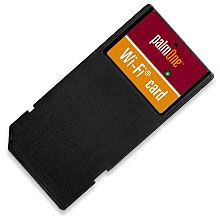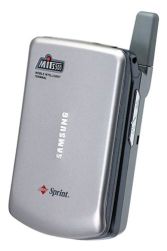Archive for November, 2004
Offshoring for Idiots
We bought a snazzy Hewlett Packard PSC 2510 printer several months ago for the office, and to print some photos of Seryn for the grandparents and our own photo albums.

This is way more than just a printer! Its printer, scanner, fax, copier.. but thats not all!
It also has a card reader built into the front. Not just ANY card reader, one that can be mounted and mapped from any computer on the network. From the reader, you can pop in a card, and email anything on the card to anyone you want, or send it to any computer on the network or Internet you want (“push” style). It has a built-in webserver and ftp server also (there’s a little security problem with the ftp server too).
It also works on 802.11b networks, which is how I have it configured here. At some point, the printer was power-cycled, it refused to connect to the wireless network again. Printing the configuration page showed that it was indeed configured to talk to the proper access point and it was getting signal. Plugging it into the wireld network allowed it to work perfectly fine, but not on the wireless network.
I hard-reset the printer back to factory default settings, and plugged it into the wired network, and reconfigured it using the Mac software. Upon restarting the printer after applying the wireless settings, still nothing. I tried dozens of possible alternatives to getting it on the wireless network, including pointing it to one of my other WAPs, disabling WEP, and other things.
After many calls to HP (including one where they insisted the printer was no longer covered by warrantee, even though it was bought about 4 months ago from Best Buy), they decided to ship me another PSC 2510. I received it the day before Thanksgiving, and their paperwork states that they needed the other printer back in their possession within 3 days. This means I had to test the replacement unit fully, box up the damaged unit, and ship it back to them the same day.. on Thanksgiving. Obviously that wasn’t going to happen.
After testing the replacement unit (a “refurbished” unit from Malaysia), I noticed that it too had the same problem. After performing the same factory-reset, reconfigure, reboot procedure, it would fail to get onto any of my wireless access points, but it would work perfectly fine on wired.
The Indian technicians I spoke with that night (there were 3 of them) were downright rude, condescending, and insulting to my intelligence. I have already debugged the printer problem. It doesn’t work on wireless. No, I can’t ping it, because IT DOESN’T WORK ON WIRELESS. They had me go through all sorts of ridiculous tests to verify that it wasn’t working. See, there’s this blue light that lights up when it has a network connection, wired or wireless, and that light wasn’t coming on. The “tech” insisted I needed to reboot my computer(s) to make that light come on. Then he insisted I needed an updated version of Windows. It was all quite funny.
In the end, he decided to schedule delivery of ANOTHER replacement printer for me. After that frustrating call, where the tech insisted I had to disable WEP and encryption on all of my computer equipment, I decided to try some other things. The technician also directly lied to me about committing to sending me a document that claimed that this printer would ONLY work on a network without encryption.. which is funny, since the drivers allow you to configure WEP for the printer.
In the end, it turns out that you CAN NOT use their drivers to configure the printer to work on wireless. You MUST use the printer’s built-in web interface to configure wireless. Don’t ask me why it makes a difference, but if you set the printer to use wireless, and configure the settings via their driver wizard (Windows or OSX), it will not work on wireless. If you reset the printer to the default settings, and then point MSIE (yes, the printer’s webserver ONLY works with MSIE, grr!) at the printer, and configure wireless settings FROM THERE, it seems to work perfectly fine.
So I called again, and cancelled the delivery of that third printer, and I sent back my original printer, the one we bought at Best Buy to HP to refurbish and send to someone else as a “new” replacement.
Overall, I’m pretty impressed with the printer’s capabilities and output.. I just wish the ink wasn’t so damn expensive to buy. I may try using one of those ink refill kits at some point. I’ve heard some stories about those though, that are keeping me away from them for now.
Palm Wireless Card
 Today I received a new gadget in the mail.. a palmOne Wi-Fi card, from Judd Montgomery, author of J-Pilot. It retails for $129.00 from Palm, but you can find it cheaper on Froogle. This particular one was funded by trading in points at the Palm Pays Back program.
Today I received a new gadget in the mail.. a palmOne Wi-Fi card, from Judd Montgomery, author of J-Pilot. It retails for $129.00 from Palm, but you can find it cheaper on Froogle. This particular one was funded by trading in points at the Palm Pays Back program.
Within a few minutes, after installing the software, I was up and running on my internal wireless network here at the house. A few minutes of tinkering later, and I was using it to HotSync to the OSX machine on the WAN, using MarkSpace‘s product MissingSync (a time-limited evaluation copy, based on pilot-link no less ;)
Syncronizing with J-Pilot was just as quick and painless.
Everything went together without a hitch, and was very straightforward. My internal wireless network is pretty complex; I have 3 wireless access points, each with their own bridging and ebtables (not iptables) setup for limiting/allowing traffic across the various “skins of the onion”. No trouble at all getting the Palm on my WAN.
Then the battery went dead. Apparently this card consumes so much power, that it took my full-charged Tungsten T3 handheld and drained it to 0% battery in about 10 minutes of use. That won’t be very useful if I have to syncronize a LOT of data over wireless (such as a full backup).
Now I’ll have to write this all up and add it to my growing collection of Palm HOWTO documents I’ve authored.
The SPH-i500 Palm Phone
Tags: syncA member of one of the pilot-link mailing lists was having trouble getting his shiny new Samsung SPH-i500 PDA/Phone working with Linux, specifically SuSE 9.1 Professional.

After trying to diagnose the problem remotely over ssh, going through several dozen tests of kernel changes, userland software changes, and other configuration changes, it was decided that the best course of action was to ship me the phone, and have me work on it directly on my own hardware. Debugging things remotely can be tedious and frustrating at times.
After I received the phone, I unpacked it and charged it up for a few hours. My normal production Debian system is configured to talk to dozens of Palm devices, so I plugged it into that first, and tried to sync.
It worked first try!
So now I had to figure out why this phone wouldn’t work on SuSE 9.1 Professional. After a long and tedious installation on a test drive in my laptop, I was up and running with SuSE, replicating the exact same environment that the owner of this phone was running.
Another quick test with my standard tools on SuSE, and it worked straight away too. Odd. So now I had to figure out what was broken at the upper levels..
More testing revealed that the culpret in at least one large piece of the puzzle, was a broken version of gnome-pilot, the “glue” behind the PIM Evolution. Upgrading the gnome-pilot package to the latest version (from source, compiled on SuSE), fixed the issue, and I was able to sync.
Lets hope that when the owner gets his phone back, we can make it work on HIS end as well.. I took dozens of pictures of the phone, and lots of screenshots. I’ll put those up in a gallery of some sort later on.
